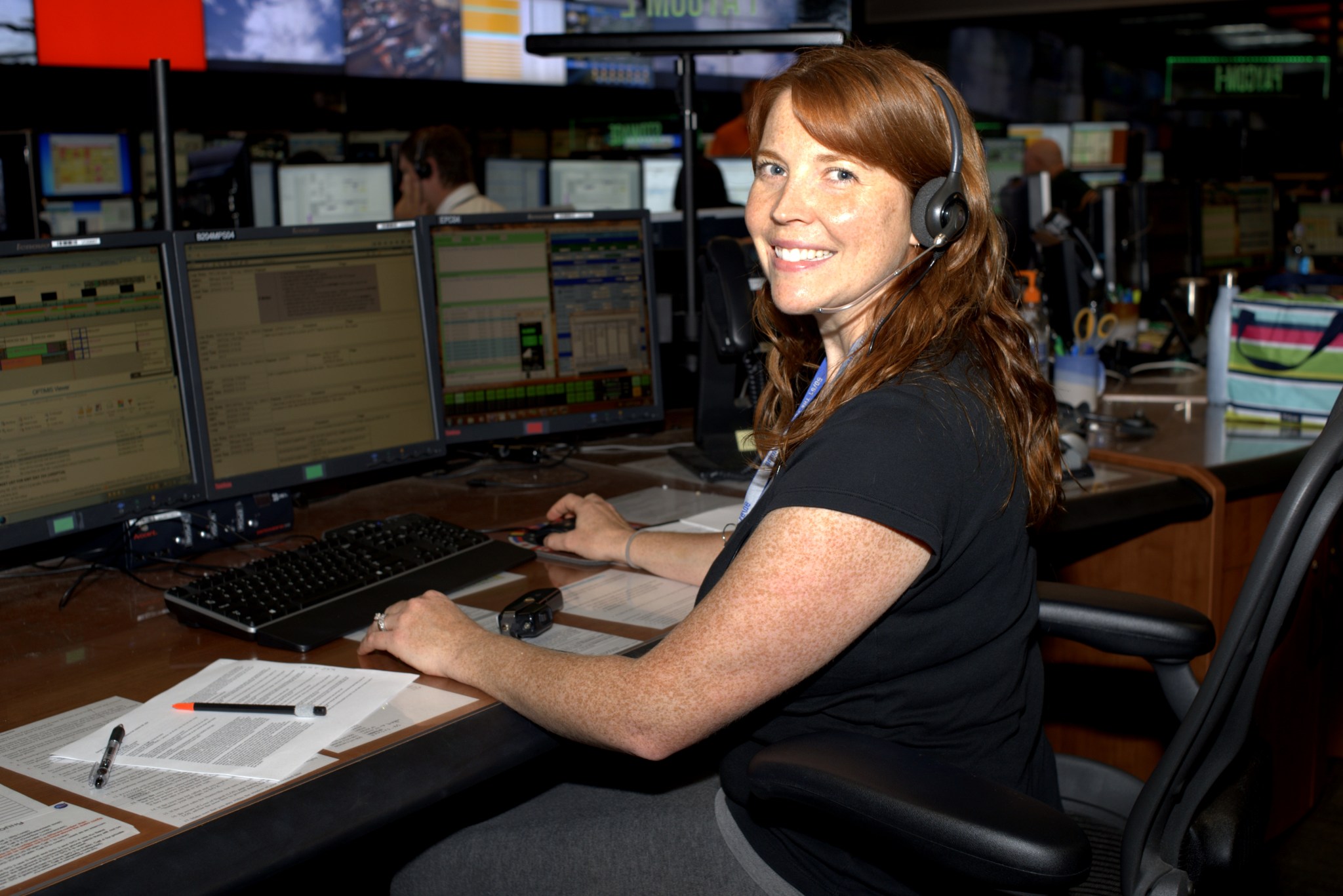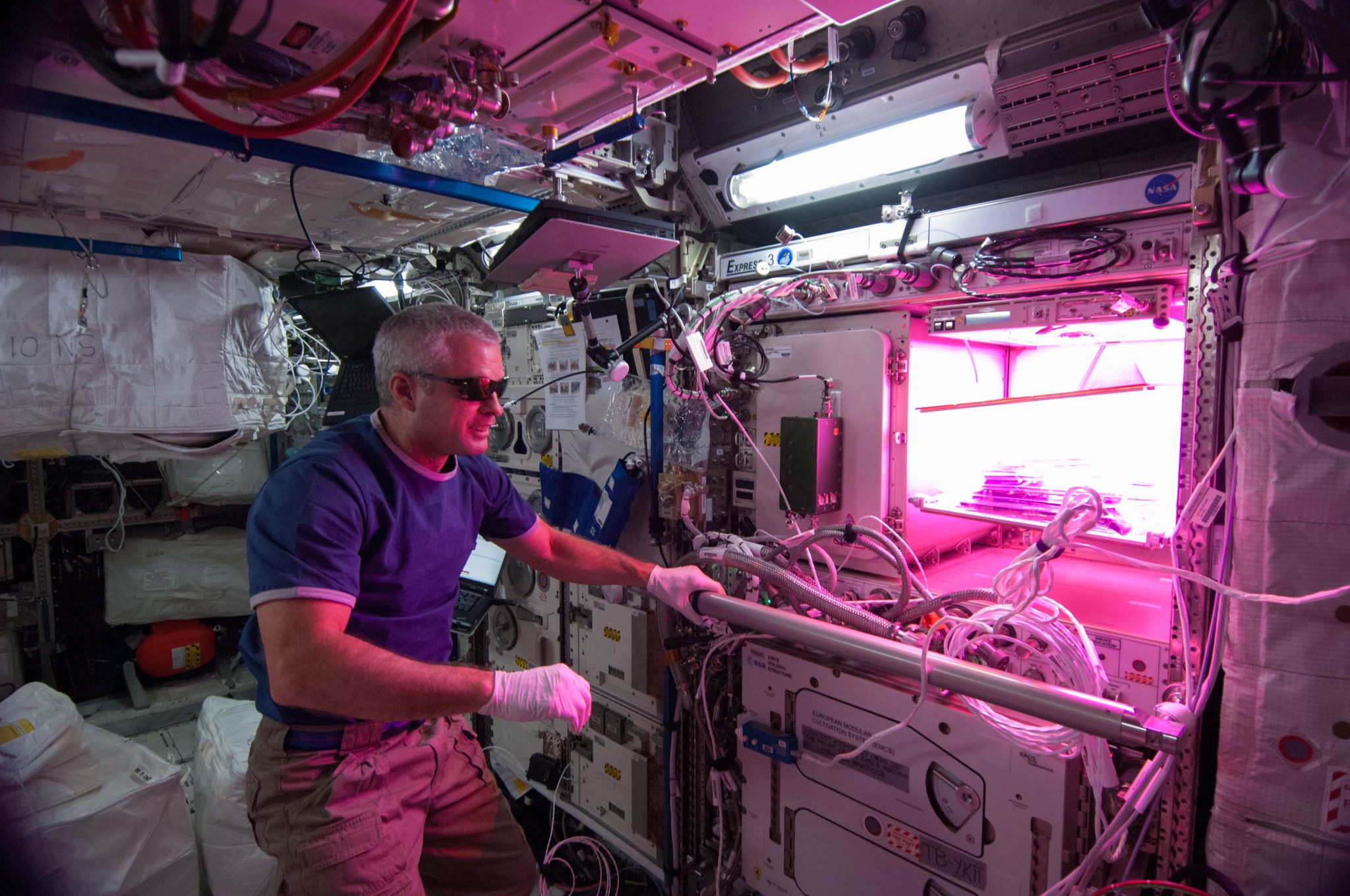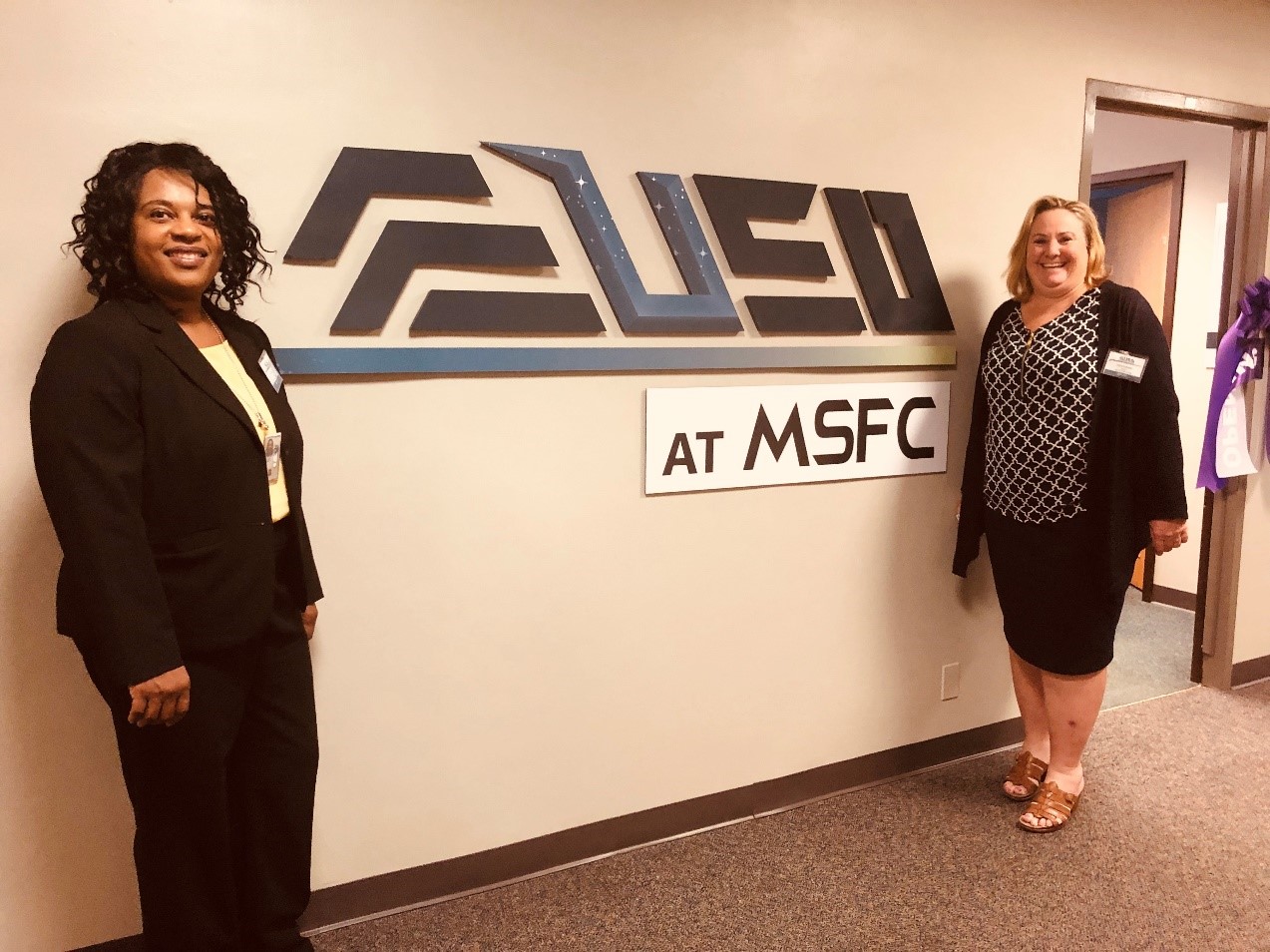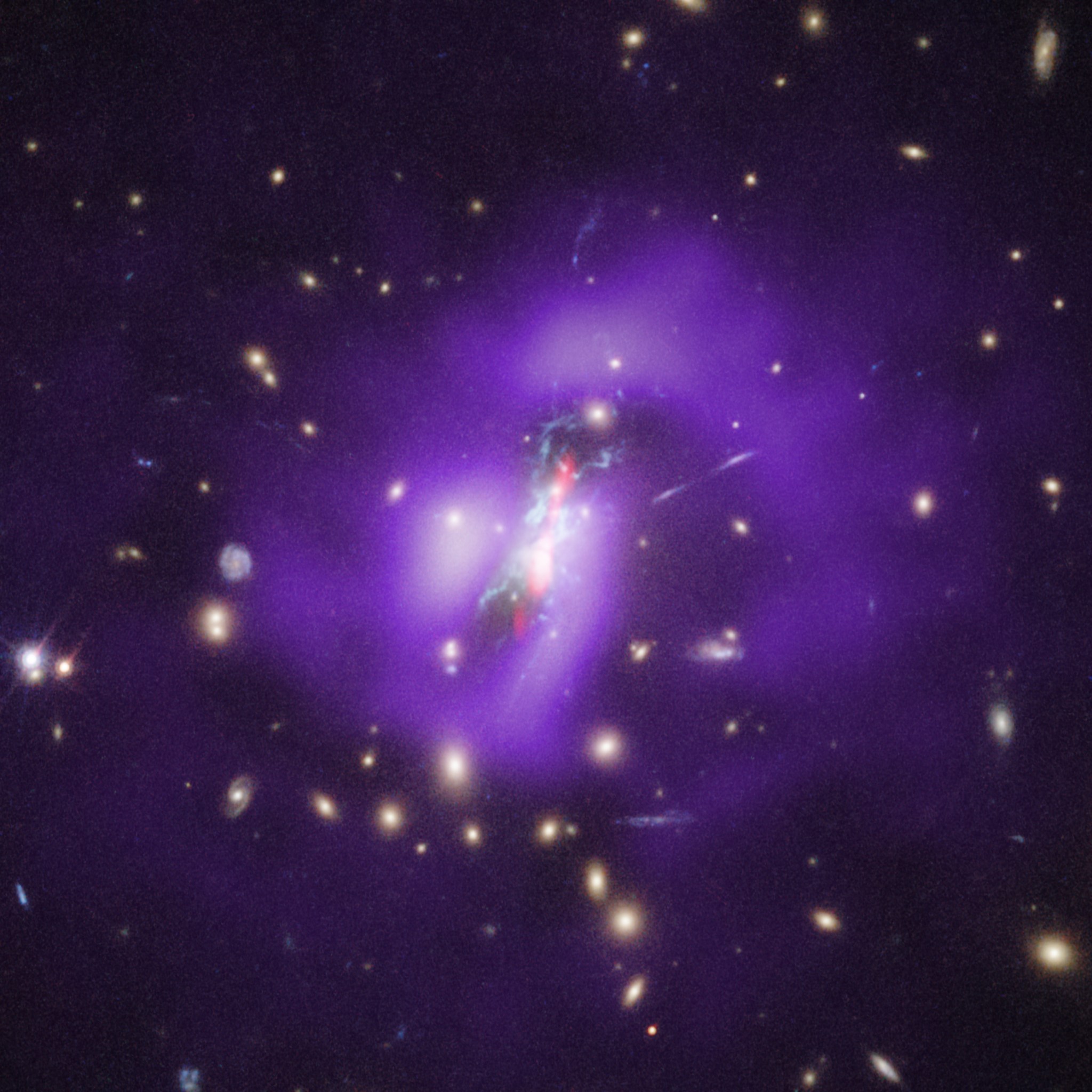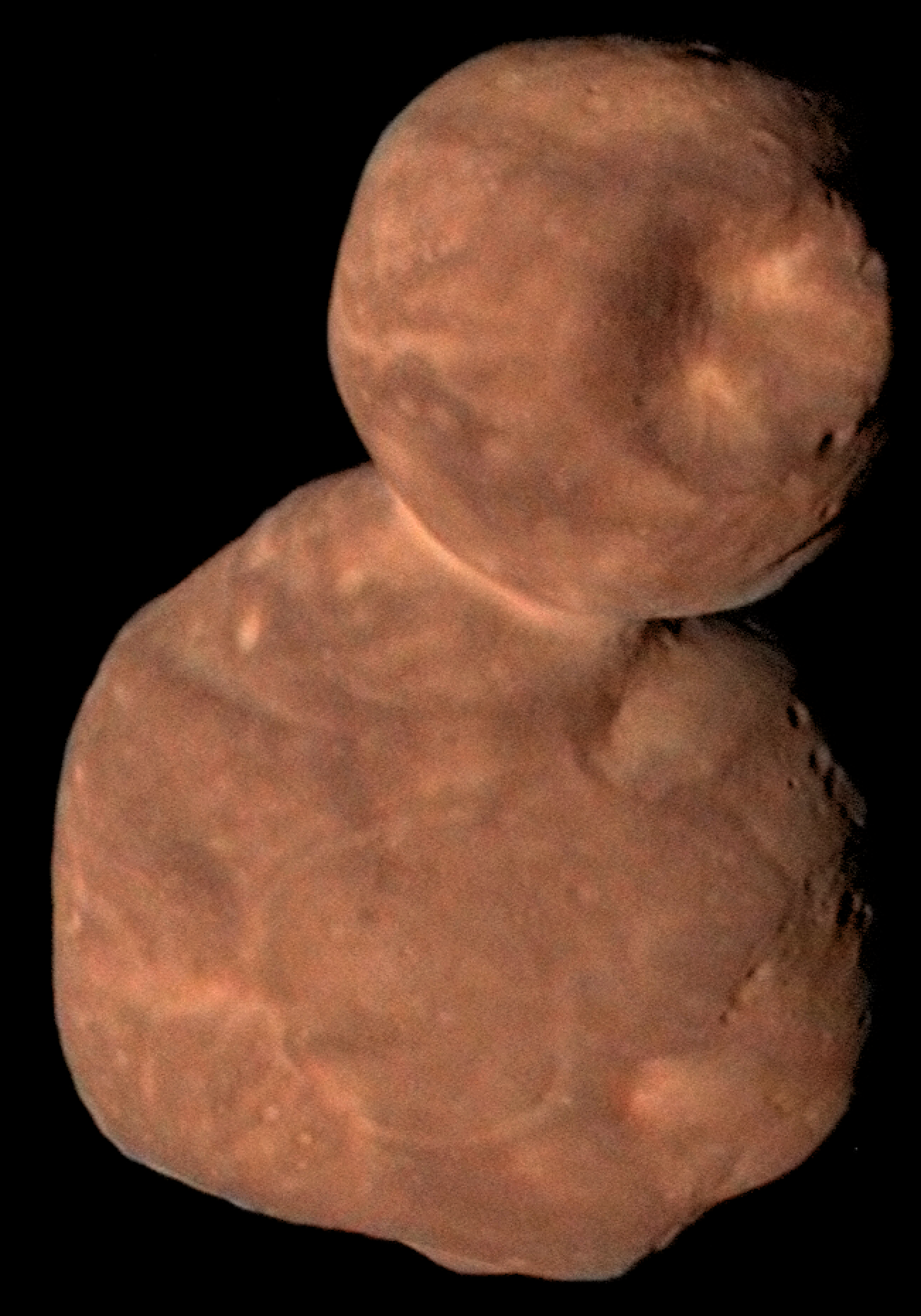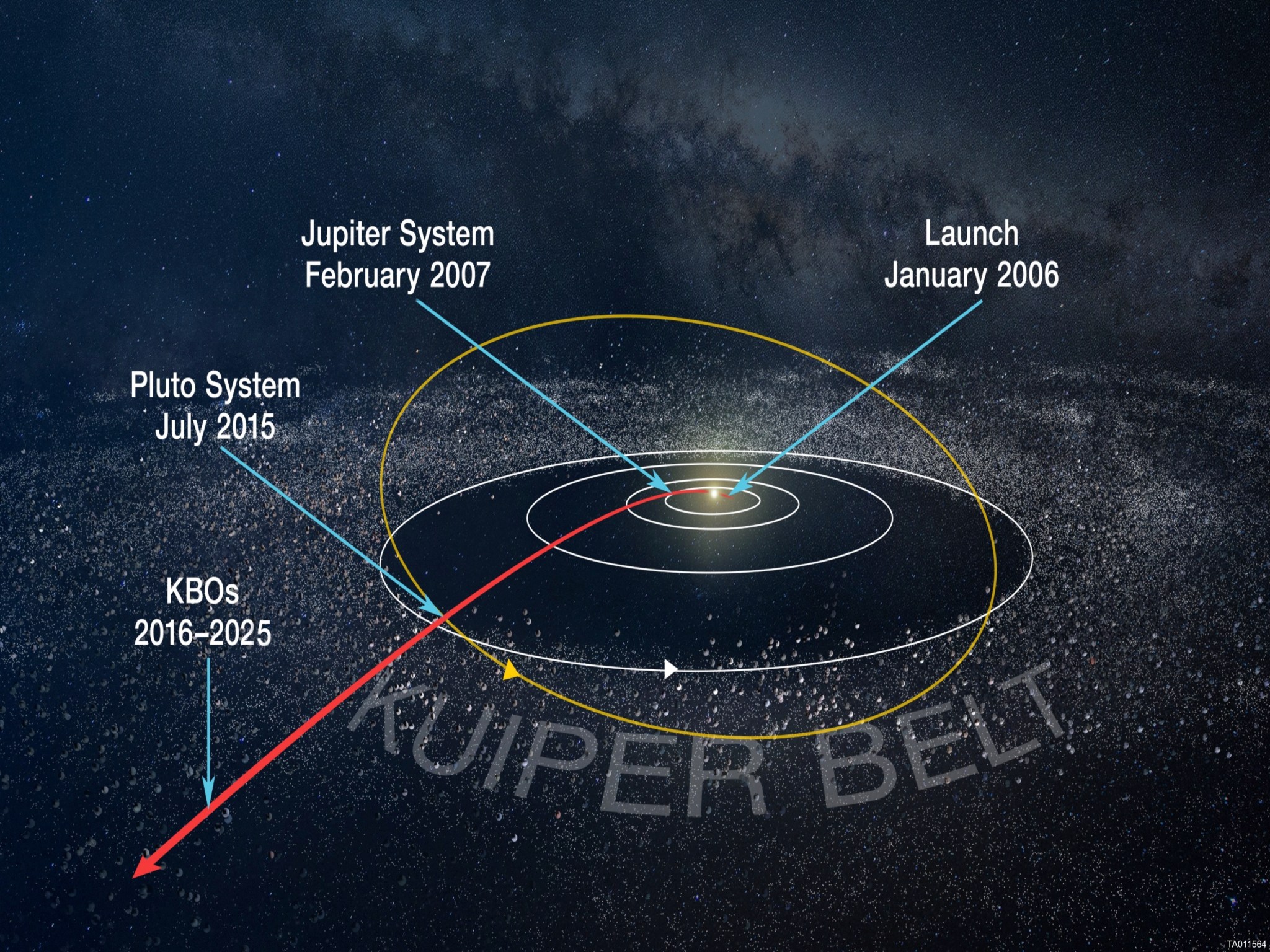In This Week’s Star
- Marshall Salutes 20 Years on Station, Looks to Orbiting Lab’s Role in New Moon, Mars Journeys
- Marshall Director Jody Singer Addresses National Space Club
- Marshall Opens NASA’s 1st End User Services SpaceBar
- Weakened Black Hole Allows Galaxy to Awaken
- Hinode Watches from Orbit as Mercury Crosses Sun
- Apollo in Real Time Website Creator Delivers November Tech Talk
- Far Away in the Sky: NASA Dubs New Horizons Kuiper Belt Flyby Object ‘Arrokoth’
- Engines for Artemis I, Special Call to Space Station Highlighted on ‘This Week @ NASA’
- This Week in NASA History: FASTSAT Launches – Nov. 19, 2010
Marshall Salutes 20 Years on Station, Looks to Orbiting Lab’s Role in New Moon, Mars Journeys
By Rick Smith
Editor’s Note: Over the coming year, to commemorate 20 years of continuous human occupation of the International Space Station, The Marshall Star will present stories about key space station successes, the team members who achieved them and new endeavors poised to take the station well into its next decade of service.
Wherever the International Space Station is as you read this — circling the planet some 250 miles up, the brightest object in the night sky except for the Moon — it’s always nearby to engineers, scientists and support teams at NASA’s Marshall Space Flight Center.
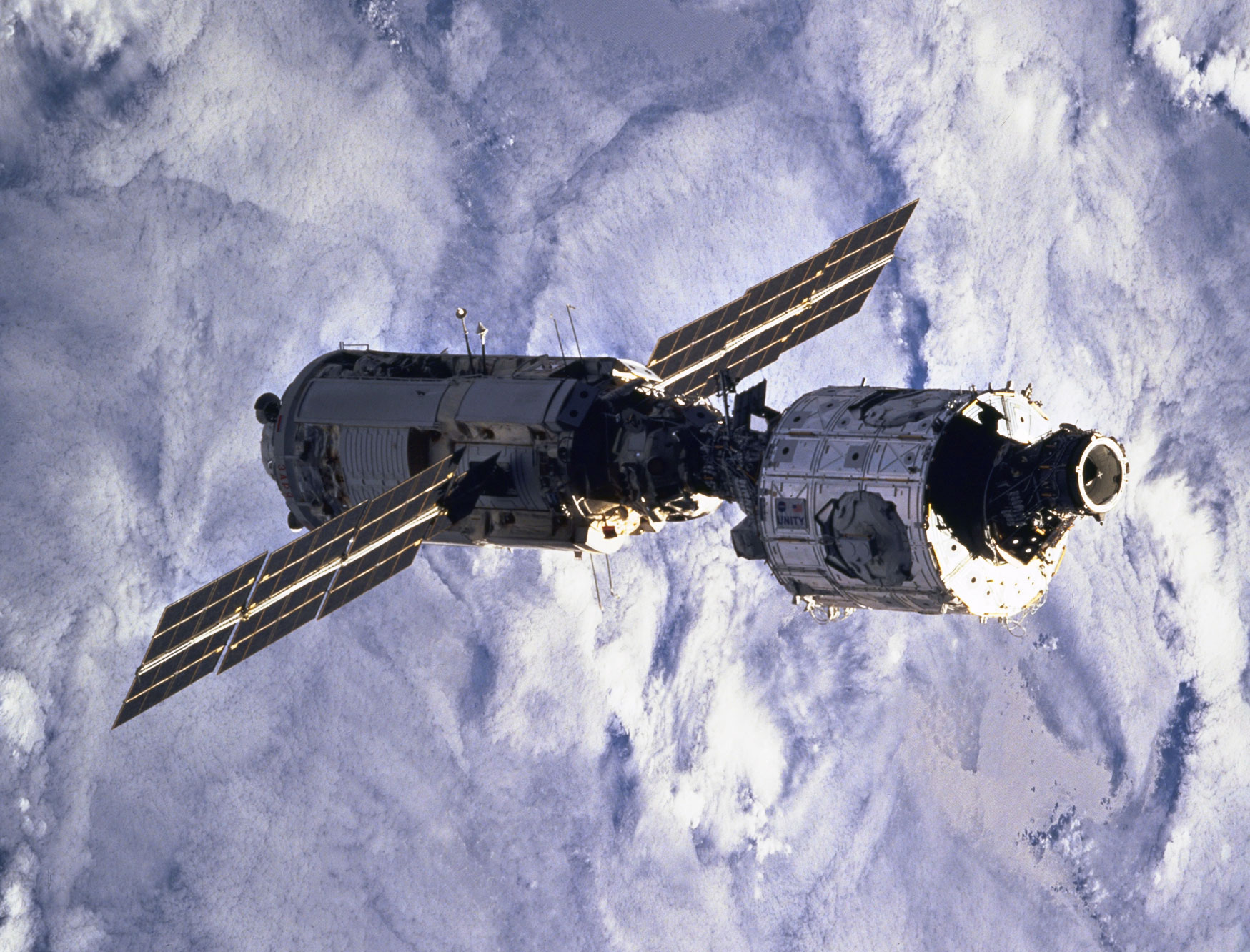
That’s been the case for decades as NASA and its partners planned, built, launched and continue to fly the space station, the world’s premiere orbital research platform and one of humanity’s modern technological triumphs.
Now NASA is leading a celebration of 20 years of continuous human occupation of the station. Those who helped deliver vital elements — flight hardware and lab modules, life support systems, science experiments and associated equipment — look back with pride.
They’re also looking forward, leveraging two decades of discoveries on the station to get ready for Artemis-era lunar missions and the first crewed journeys to Mars.
Bobby Watkins, director of Marshall’s Human Exploration Development & Operations Office, vividly recalls the 1998 launch of STS-88, the space shuttle Endeavor mission which flew Node 1 — the Unity module built by Boeing at Marshall — to orbit to be mated with the Zarya module. And he takes pride in all the Marshall contributions that followed.
“So much of the station carries Marshall’s fingerprints,” he said. “We helped design, test and deliver the Destiny laboratory, the Joint Quest airlock and so much more.” Even the berthing mechanism, he noted — which links the U.S., Japanese and European modules and docking commercial spacecraft — was designed, built and tested at Marshall.
“All that hands-on development work, all those big accomplishments laid the groundwork for the vehicles, hardware and systems Marshall is building today, from the Space Launch System to the human lunar lander that will deliver Artemis crews to the Moon,” he added.
Marshall engineers devised the station’s Environmental Control and Life Support System, which reduces the need for expensive air and water resupply flights. Marshall also managed, built and tested many of the station’s science facilities, including the Materials Science Research Rack, eight EXPRESS racks — EXpedite the PRocessing of Experiments for Space Station — and the Microgravity Glovebox and Life Sciences Glovebox.
Annette Sledd, manager of Marshall’s ISS Projects Office, joined the station team in 1985, reviewing procurement materials to help NASA select a space station prime contractor. Sledd has spent much of her 37 years at NASA overseeing station hardware development and integration, from the early stages of the Destiny lab module to ECLSS and the EXPRESS racks.
“It’s always our job to look out for the science user community, to simplify the integration process and work to promote research mission success,” Sledd said. “When the racks couldn’t keep up with demand, our office provided technical oversight to build three more. When requests for the original glovebox outpaced availability, we added a second. And Marshall continues to test all payloads that make use of EXPRESS Racks or gloveboxes.”
When NASA was preparing the station for its first occupants, HEDO Deputy Director Joseph Pelfrey was an Auburn University undergraduate readying an experiment to fly on NASA’s KC-135A, the parabolic flight path of which briefly simulates microgravity and earned the craft the nickname “Vomit Comet.”
Similarly, Marshall’s role in supporting studies measuring the effects of microgravity on muscles, bones and organs is of real value going forward, Pelfrey said.
“We’ve learned so much about the impact of long-term crew missions,” he said. “That’s more vital now than ever, as we seek ways to prepare explorers for extended trips to the Moon and Mars.”
Crissy Canerday, Marshall’s Payload Communications Manager team lead, was still an undergraduate — and an aspiring astronaut — at Embry-Riddle Aeronautical University in Daytona Beach, Florida, at the start of station crew activities. She joined NASA in 2007 as a shuttle program engineer. In time, she realigned her goals to pursue space station science communications in the Payload Operations Integration Center, which provides 24/7 crew support and monitors experiments on orbit 365 days a year.
“I got lucky,” she said. “PAYCOM is about as close as you can come on the ground to the astronaut corps.” Today, she leads the 14-member PAYCOM team, assisting the station crew in conducting science experiments on orbit and connecting them with partner researchers worldwide. “It’s so rewarding,” she said. “A job right out of the movies.”
That round-the-clock support will evolve as NASA extends human reach farther into space, Watkins said. “Our needs on the Moon and Mars will be different from those in low-Earth orbit, but the station will continue to serve as a vital proving ground for technologies needed in human exploration across the solar system,” he said.
The station itself continues to change, Pelfrey noted, particularly in terms of its operating paradigm. “We’re developing new partnerships, expanding its commercial value,” he said. “In time I envision NASA operating side-by-side with commercial entities on the station.”
Those relationships, Canerday agrees, are what the job’s all about. “We’ve become a family,” she said. “There’s a camaraderie, a shared sense of accomplishment. And when you finish a shift and go out and spot the station flying over… It’s the coolest thing ever.”
Smith, an ASRC Federal/Analytical Services employees, supports the Office of Strategic Analysis & Communications.
Marshall Director Jody Singer Addresses National Space Club
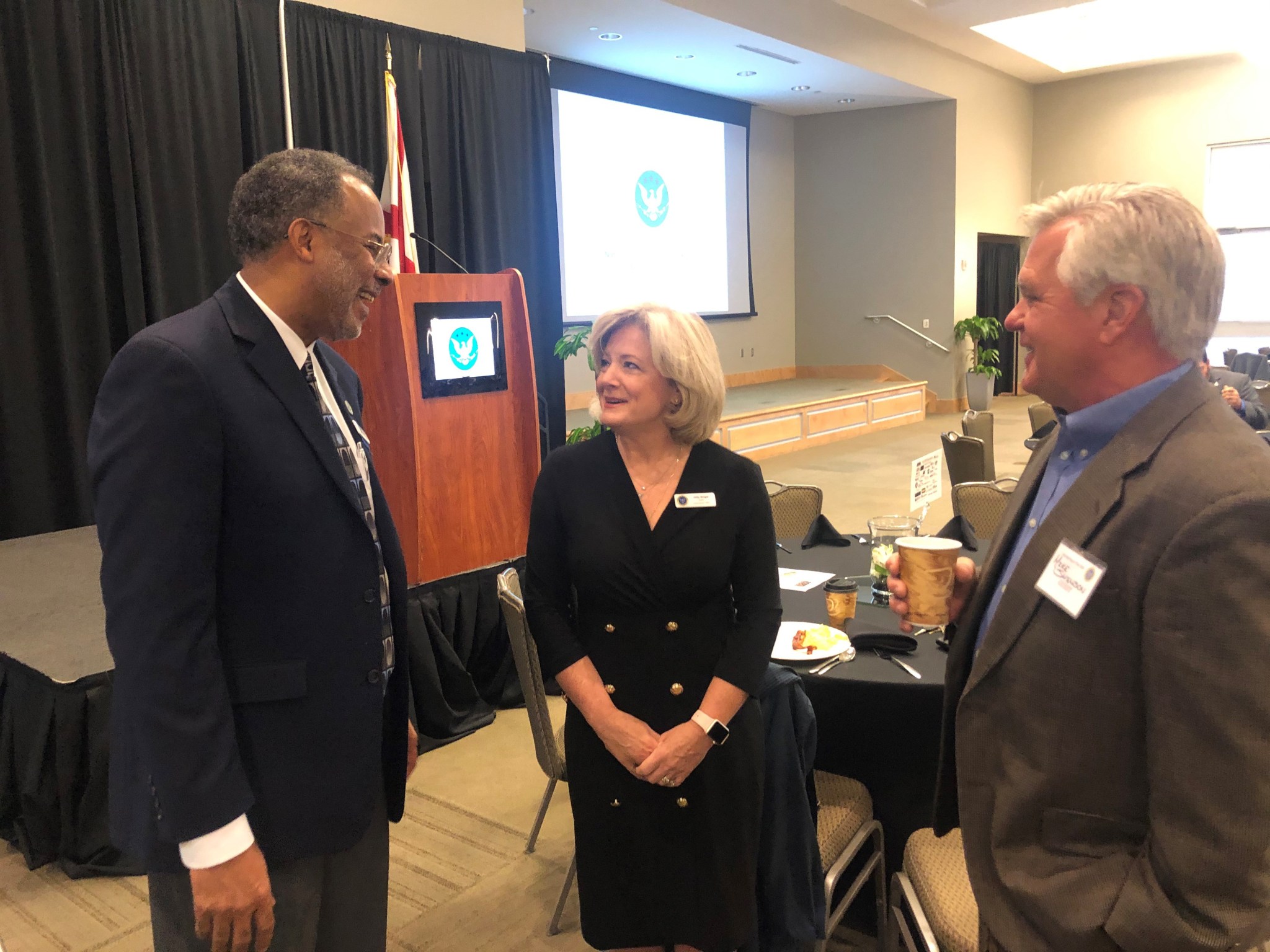
NASA’s Marshall Space Flight Center Director Jody Singer, center, talks with National Space Club-Huntsville Chair Charles Scales, of Sierra Lobo, left, and A.I. Solutions’ Mike Swenson following her address Nov. 19 at the NSC Breakfast at the Jackson Center. Singer shared with attendees details about how Marshall is delivering on critical human spaceflight missions, including Artemis I. “This next phase of exploration to the Moon, Mars and beyond is only possible with the success of the Space Launch System and Human Landing System,” Singer said. “And it’s only possible with the support from you in this room and others in this community.” (NASA)
Marshall Opens NASA’s 1st End User Services SpaceBar
By Taylor Goodwin
NASA’s Marshall Space Flight Center opened the agency’s first walk-up “SpaceBar” technical support center with a ribbon-cutting ceremony Oct. 23.
Operated by NASA’s End User Services Program Office, SpaceBar is part of an effort to provide an advanced IT customer service experience to all NASA end users. With just a trip to the EUSO SpaceBar — located in the basement of Building 4200, next to Charlie’s Grill — both Marshall civil servants and contractors will receive face-to-face technical support from skilled service technicians.
“We’re looking to make IT an aid rather than an obstacle,” EUSO team member Denise Perkins said in an introductory video. “We’ll get that problem fixed, and if it’s more complex, we’ll find a way to get you to the right answer.”
Available services include computer and mobile walk-up support; software assistance, including login or reinstallation of BitLocker, AnyConnect or PIV, FileVault and mobile device management; obtaining a computer or mobile loaner; virtual private network assistance, including reinstallation or network resynchronization; business productivity support of applications, such as Microsoft and Skype; system setting and configuration support; and password lockout and reset support. The space is also equipped with self-help kiosks that link to the Enterprise Service Desk — enabling users to find links to reset passwords, search more than 1,900 knowledge articles to help resolve issues, create and check status of tickets and requests, approve requests, take surveys after tickets and requests close, view assets assigned to the user and leave feedback.
One of the SpaceBar’s most popular features is the showcase of available computers, mobile phones and other technology. When team members are obtaining their initial machines or fulfilling a refresh, they can explore their options and interact with the technology before choosing a product.
“We’re looking forward to having the SpaceBar available throughout NASA to have these services available just a short walk away,” EUSO program executive Roscoe Sheehy said. “The EUSO SpaceBar provides a unique opportunity for our customers to examine the products and services we offer in a comfortable setting with access to knowledgeable technology professionals. As the host center for EUSO, Marshall Space Flight Center is a significant strategic partner and exemplified continued support for our mission by allocating access to a perfect location for the EUSO SpaceBar.”
The next SpaceBar location will open at NASA Headquarters in early 2020. Custom-built versions of the SpaceBar will phase into all other NASA field centers.
“The Marshall SpaceBar owes a great deal to the amazing leadership and partnership of the Office of the Chief Information Officer IT experts and EUSO customer relationship managers Patresa Fletcher, Tom Florio and Katherine Russell,” Perkins said. “The EUSO SpaceBar team worked hand-in-hand to ensure the facility’s readiness, from a functional perspective, was apt and able to meet the needs of Marshall’s end user community.”
SpaceBar is a part of EUSO’s commitment to provide seamless support in conjunction with NASA’s overall mission objectives. As the agency continues to work toward landing the first woman and the next man on the Moon by 2024, the EUSO team aims to do their part by offering an enhanced technical experience for all involved.
Goodwin, an ASRC Federal/Analytical Services employee, supports the Office of Strategic Analysis & Communications.
Weakened Black Hole Allows Galaxy to Awaken
Astronomers have confirmed the first example of a galaxy cluster where large numbers of stars are being born at its core. Using data from NASA space telescopes and other resources, researchers have gathered new details about how the most massive black holes in the universe affect their host galaxies.
Galaxy clusters are the largest structures in the cosmos that are held together by gravity. They consist of hundreds or thousands of galaxies embedded in hot gas, as well as invisible dark matter. The largest supermassive black holes known are in galaxies at the centers of these clusters.
For decades, astronomers have sought out galaxy clusters containing rich nurseries of stars at their center. Instead, they found powerful, giant black holes pumping out energy through jets of high-energy particles and keeping the gas too warm to form many stars.
Now, scientists have compelling evidence for a galaxy cluster where stars are forming at a furious rate, apparently linked to a weak black hole in its center. Researchers used new data from NASA’s Chandra X-ray Observatory and Hubble Space Telescope, and the National Science Foundation’s Karl Jansky Very Large Array to build on previous observations of this cluster.
NASA’s Marshall Space Flight Center manages the Chandra program for the agency.
“This is a phenomenon that astronomers had been trying to find for a long time,” said Massachusetts Institute of Technology astronomer Michael McDonald, who led the study. “This cluster demonstrates that, in some instances, the energetic output from a black hole can actually enhance cooling, leading to dramatic consequences.”
The black hole is in the center of a galaxy cluster called the Phoenix Cluster, about 5.8 billion light years from Earth. The galaxy hosting the black hole is surrounded by hot gas with temperatures of millions of degrees. The mass of this gas, equivalent to trillions of suns, is several times greater than the combined mass of all the galaxies in the cluster.
This hot gas loses energy as it glows in X-rays, which should cause it to cool until it can form large numbers of stars. In other observed galaxy clusters, however, bursts of energy driven by such black holes keep most of the hot gas from cooling, preventing widespread star birth.
“Imagine running an air conditioner in your house on a hot day, but then starting a wood fire. Your living room can’t properly cool down until you put out the fire,” said study co-author Brian McNamara of the University of Waterloo in Canada. “Similarly, when a black hole’s heating ability is turned off in a galaxy cluster, the gas can then cool.”
Evidence for rapid star formation in the Phoenix Cluster was previously reported in 2012 by a team led by McDonald. But the new findings, which combine long observations in X-ray, optical and radio light, offered researchers a tenfold improvement in data quality compared to previous observations.
“In the past, outbursts from the undersized black hole may have simply been too weak to heat its surroundings, allowing hot gas to start cooling,” said study co-author Matthew Bayliss, a former researcher at MIT during the study, now on the faculty at the University of Cincinnati. “But as the black hole has grown more massive and more powerful, its influence has been increasing.”
The cooling can continue when the gas is carried away from the center of the cluster by the black hole’s outbursts. At a greater distance from the heating influence of the black hole, the gas cools faster than it can fall back toward the center of the cluster. This scenario explains the observation that cool gas is located around the borders of the cavities, based on a comparison of the Chandra and Hubble data.
Eventually the outburst will generate enough turbulence, sound waves and shock waves to provide sources of heat and prevent further cooling. This will continue until the outburst ceases and the buildup of cool gas can recommence. The whole cycle may then repeat.
A paper describing these results was published in a recent issue of The Astrophysical Journal, and a reprint is available online.
The Smithsonian Astrophysical Observatory’s Chandra X-ray Center in Cambridge, Massachusetts, controls science and flight operations. The Hubble Space Telescope is a project of international cooperation between NASA and the European Space Agency. The National Radio Astronomy Observatory is a facility of the National Science Foundation, operated under cooperative agreement by Associated Universities Inc.
Read the entire NASA news feature here.
Hinode Watches from Orbit as Mercury Crosses Sun
Hinode is a joint endeavor by the Japan Aerospace Exploration Agency (JAXA), National Astronomical Observatory of Japan (NAOJ), European Space Agency, United Kingdom Space Agency and NASA.
These images were taken with Hinode’s X-Ray Telescope (XRT), which observes the solar atmosphere at millions of degrees. Additional movies from the XRT are available from the Harvard-Smithsonian Center for Astrophysics and JAXA. Credits: JAXA/NASA/SAO/Montana State University/NAOJ
As Mercury passes between Earth and the Sun on Nov. 11, the international Hinode solar-observing satellite captured the transit, which can be used to measure the distance between Earth and the Sun. Hinode is a joint endeavor by the Japan Aerospace Exploration Agency, National Astronomical Observatory of Japan, NASA, European Space Agency and the United Kingdom Space Agency. NASA’s Marshall Space Flight Center manages Hinode’s science operations for the agency. The images were taken with Hinode’s X-Ray Telescope, which observes the solar atmosphere at millions of degrees. Additional videos from Hinode’s X-Ray Telescope are available from the Harvard-Smithsonian Center for Astrophysics, National Astronomical Observatory of Japan and the Japanese Aerospace Exploration Agency. (Credit: JAXA/NASA/SAO/Montana State University/NAOJ)
Apollo in Real Time Website Creator Delivers November Tech Talk
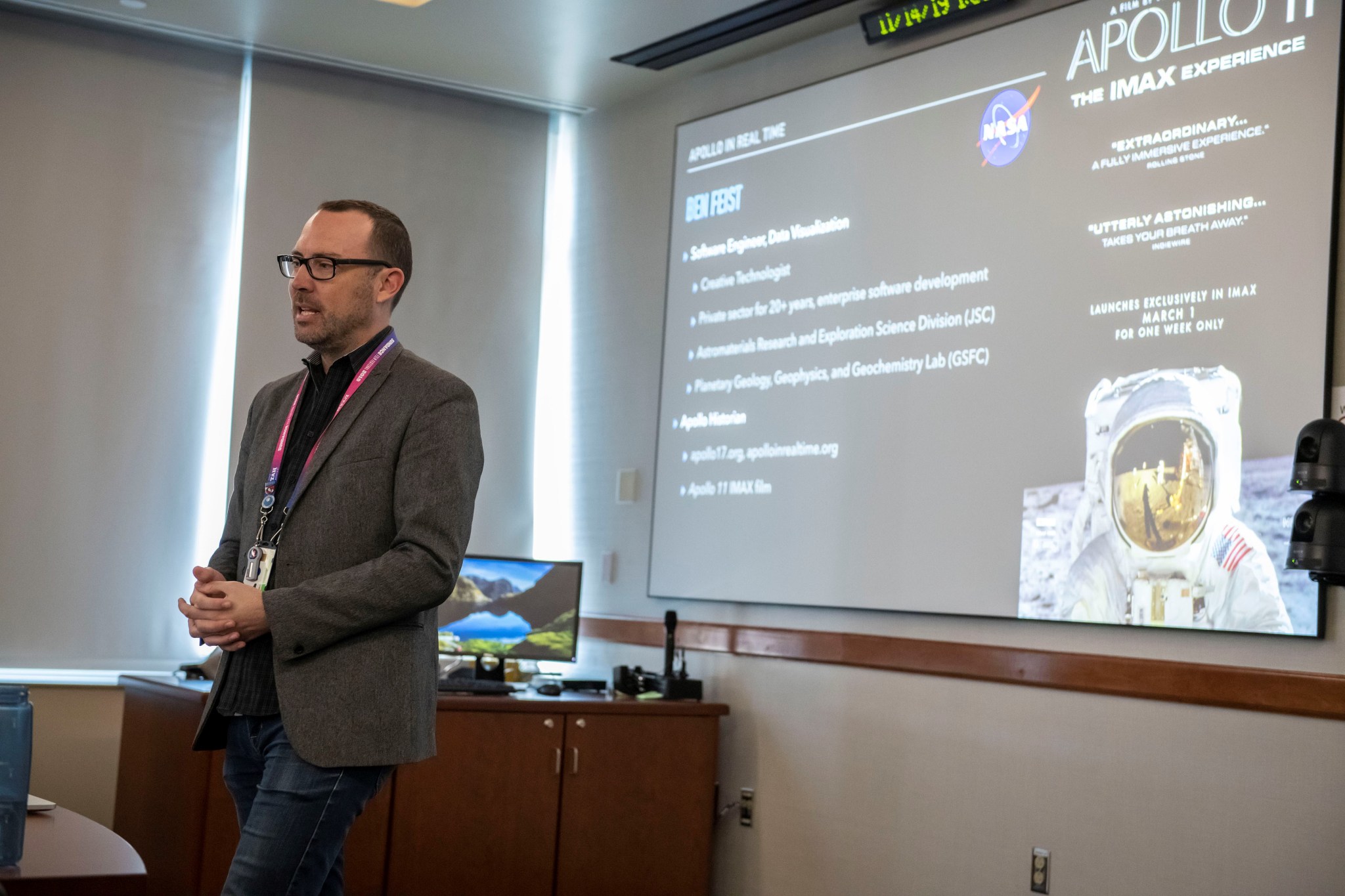
Ben Feist, creator of the Apollo in Real Time website, delivers the monthly Tech Talk on Nov. 14 at NASA’s Marshall Space Flight Center. Feist — a software engineer at NASA’s Johnson Space Center — developed the website over many years as a hobby, compiling audio transmissions, photography and video footage from the Apollo 11 mission. Visitors to the website can relive the Apollo 11 mission as it happened in 1969. The Tech Talk series is presented by the Marshall Center Chief Technologist’s Office. The next Tech Talk, scheduled for Dec. 12, will feature Zachary Jones, who works in additive manufacturing at Marshall. His talk will be combined with the third session of the “Did You Know Marshall Did That?” series. (NASA/Fred Deaton)
Far Away in the Sky: NASA Dubs New Horizons Kuiper Belt Flyby Object ‘Arrokoth’
In a fitting tribute to the farthest flyby ever conducted by spacecraft, the Kuiper Belt object 2014 MU69 has been officially named Arrokoth, a Native American term meaning “sky” in the Powhatan/Algonquian language.
With consent from Powhatan tribal elders and representatives, NASA’s New Horizons team — whose spacecraft performed the record-breaking reconnaissance of Arrokoth 4 billion miles from Earth — proposed the name to the International Astronomical Union and Minor Planets Center, the international authority for naming Kuiper Belt objects. The name was announced at a ceremony Nov. 12 at NASA Headquarters.
“The name reflects the inspiration of looking to the skies and wondering about the stars and worlds beyond our own,” said Alan Stern, principal investigator for New Horizons from the Southwest Research Institute in Boulder, Colorado. “That desire to learn is at the heart of the New Horizons mission.”
New Horizons launched in 2006. It zipped past Jupiter for a gravity boost and scientific studies in 2007 and conducted a historic first flight through the Pluto system in 2015. The spacecraft continued its unparalleled voyage this year with the exploration of Arrokoth — previously nicknamed “Ultima Thule” — a billion miles beyond Pluto. It is the farthest flyby ever remotely conducted by humankind.
Arrokoth is one of thousands of known small icy worlds in the Kuiper Belt, the vast third zone of the solar system beyond the inner terrestrial planets and the outer gas giants. It was discovered in 2014 by a New Horizons team using the Hubble Space Telescope.
“Data from the newly named Arrokoth has given us clues about the formation of planets and our cosmic origins,” said Marc Buie, a Southwest Research Institute investigator who was part of the Arrokoth discovery team. “We believe this ancient body, composed of two distinct lobes that merged into one entity, may harbor answers that contribute to our understanding of the origin of life on Earth.”
Because the Hubble Space Telescope and the New Horizons mission work are both based in Maryland — at the Space Telescope Science Institute and Johns Hopkins Applied Physics Laboratory, respectively — the discovery team chose to associate the newfound Kuiper Belt object with the culture of the Powhatan people in Maryland’s Chesapeake Bay region.
“Bestowing the name Arrokoth signifies the strength and endurance of the indigenous Algonquian people of the Chesapeake region,” said Lori Glaze, director of NASA’s Planetary Science Division. “Their heritage continues to be a guiding light for all who search for meaning and understanding of the origins of the universe and the celestial connection of humanity.”
The Johns Hopkins Applied Physics Laboratory designed, built and operates the New Horizons spacecraft and manages the mission for NASA’s Science Mission Directorate. The Planetary Missions Program Office at NASA’s Marshall Space Flight Center provides oversight for New Horizons as part of NASA’s New Frontiers Program. The Southwest Research Institute directs the mission and leads the science team, payload operations and encounter science planning.
Engines for Artemis I, Special Call to Space Station Highlighted on ‘This Week @ NASA’
The installation of all four RS-25 engines into the core stage of NASA’s Space Launch System rocket and a special call to the International Space Station are highlighted in “This Week @NASA,” a weekly video program broadcast nationwide on NASA-TV and posted online.
At NASA’s Michoud Assembly Facility, all four RS-25 engines have been attached to the core stage of the Space Launch System rocket in preparation for Artemis I, the first integrated uncrewed flight test of SLS and NASA’s Orion spacecraft. To complete assembly of the rocket stage, engineers and technicians will integrate the propulsion and electrical systems within the structure.
In recognition of Veterans Day, NASA’s Marshall Space Flight Center recently welcomed Army Lt. General James Dickinson, commanding general of the U.S. Army Space and Missile Defense Command, for a visit to the center’s Payload Operations Integration Center. While there, he had a space-to-ground conversation with astronaut and fellow soldier Andrew Morgan — an active-duty emergency physician — about Morgan’s experiences aboard the space station.
View this and previous episodes at “This Week @NASA” on NASA’s YouTube page.
This Week in NASA History: FASTSAT Launches – Nov. 19, 2010
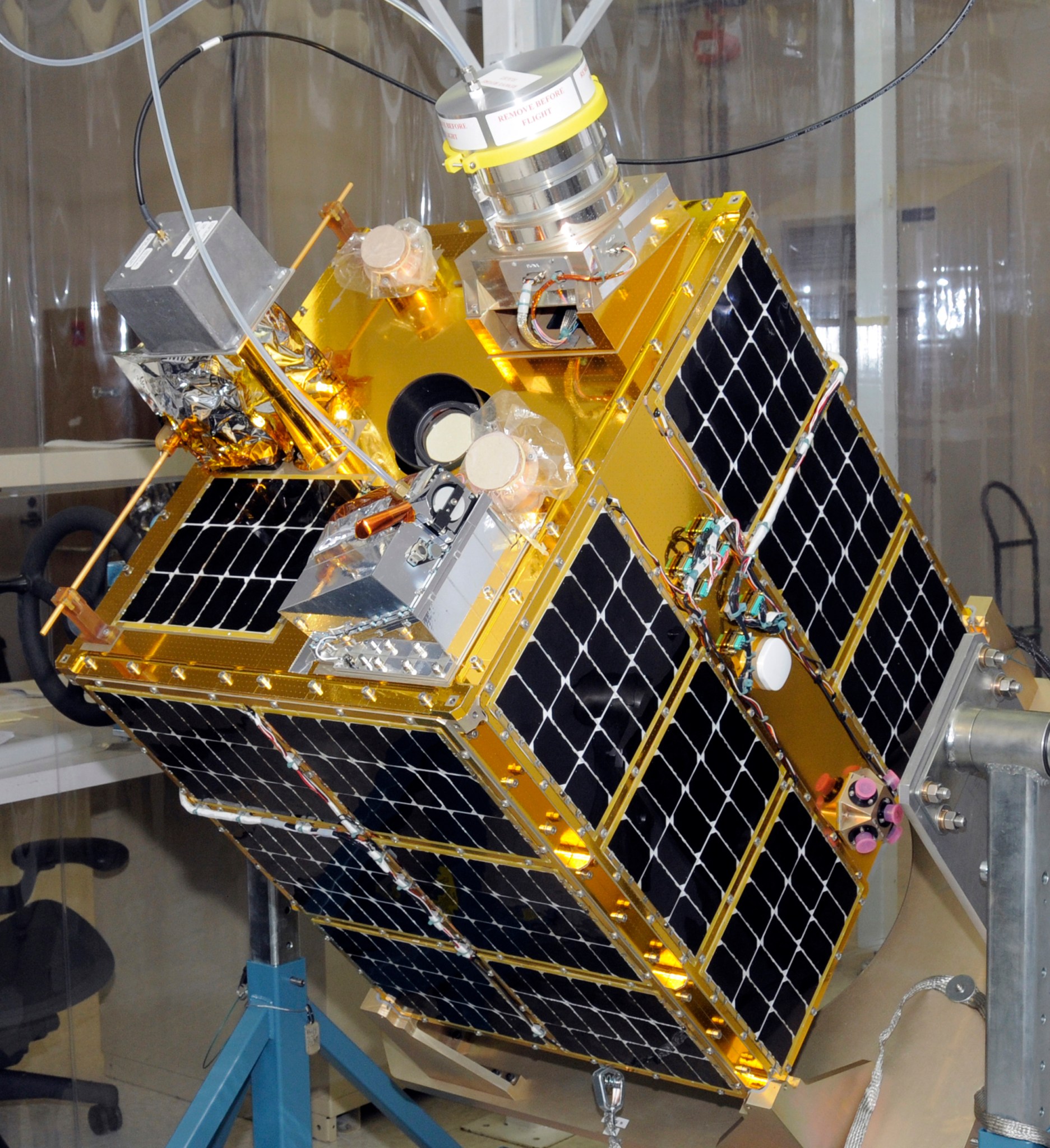
This week in 2010, NASA’s Fast, Affordable, Science and Technology Satellite mission launched from Kodiak, Alaska. FASTSAT was NASA’s first microsatellite designed to create a capability that increases opportunities for secondary scientific and technology payloads to be flown at lower costs than previously possible. The overall objective of the mission was to demonstrate the capability to build, design and test a mini satellite platform that enabled government, academic and industry researchers to conduct low-cost scientific and technology experiments on an autonomous satellite in space. The satellite was designed, developed and tested over a period of 14 months at NASA’s Marshall Space Flight Center, in partnership with the Von Braun Center for Science and Innovation, and Dynetics, both of Huntsville; and the Department of Defense Space Test Program. FASTSAT’s mission came to a successful end in November 2012. The NASA History Program is responsible for generating, disseminating and preserving NASA’s remarkable history and providing a comprehensive understanding of the institutional, cultural, social, political, economic, technological and scientific aspects of NASA’s activities in aeronautics and space. For more pictures like this one and to connect to NASA’s history, visit the Marshall History Program’s webpage. (NASA)




























